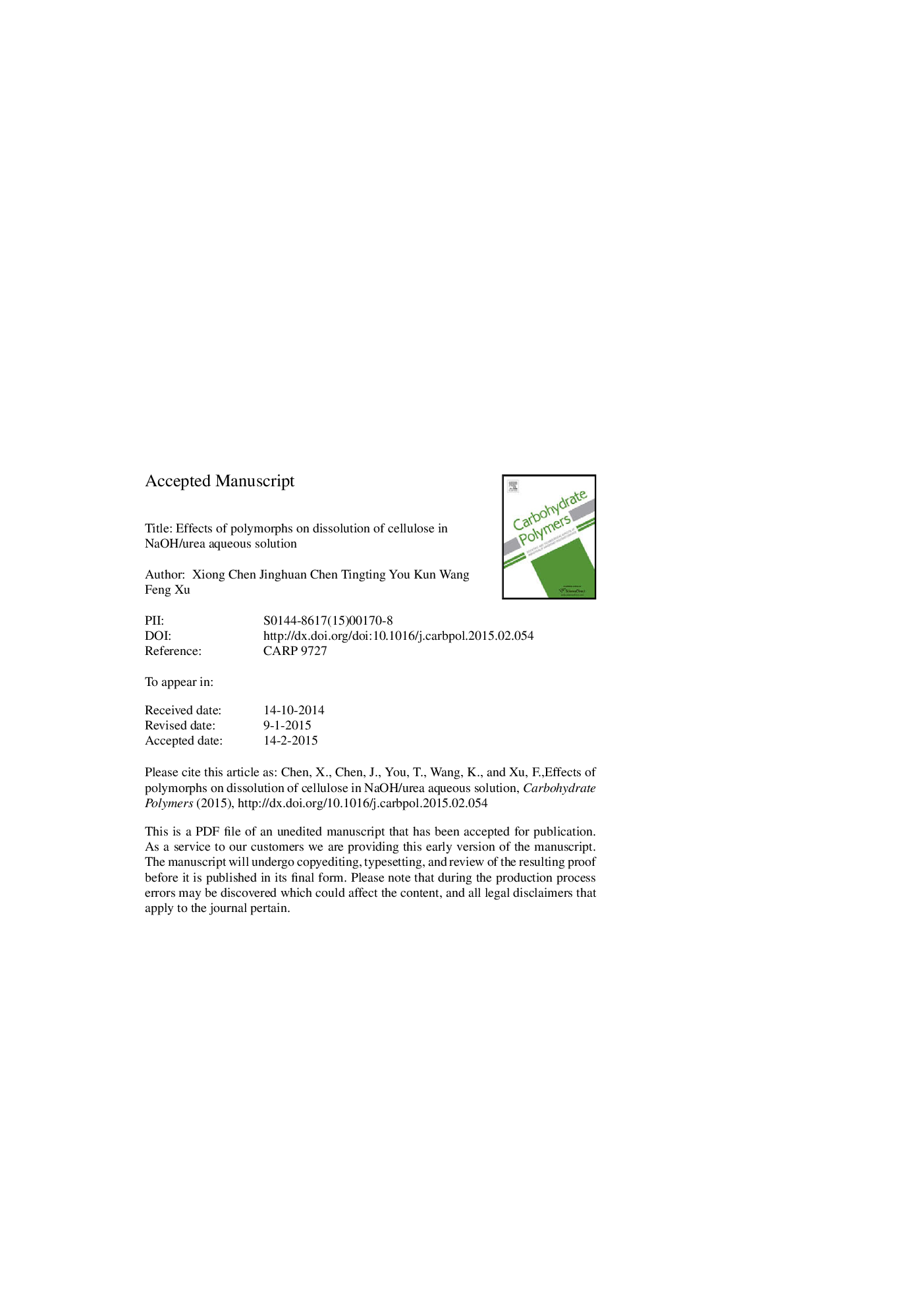| Article ID | Journal | Published Year | Pages | File Type |
|---|---|---|---|---|
| 7788623 | Carbohydrate Polymers | 2015 | 34 Pages |
Abstract
This study focused on the effect of cellulose crystal type on the dissolution of cellulose in aqueous NaOH/urea. Cellulose I, II, IIII, and IVI were prepared and characterized. Subsequently, the solubility of these cellulose samples in aqueous NaOH/urea was tested and the mechanism was determined by a combination of 1H NMR spectroscopy and differential scanning calorimetry (DSC). The results indicated that, compared with the degree of polymerization (DP) and crystallinity index of cellulose, the cellulose crystal type had greater impact on cellulose dissolution. Specially, the solubility of the cellulose I, II, and III was progressively decreased, probably due to different hydrogen bond network and packing energy in it. The ability of cellulose I, II, III, and IV to form hydrogen bonds with sodium hydroxides was nearly the same, while gradually increased when cellulose preparations were associated with urea. Moreover, all the cellulose solutions showed good thermal stability.
Keywords
Related Topics
Physical Sciences and Engineering
Chemistry
Organic Chemistry
Authors
Xiong Chen, Jinghuan Chen, Tingting You, Kun Wang, Feng Xu,
